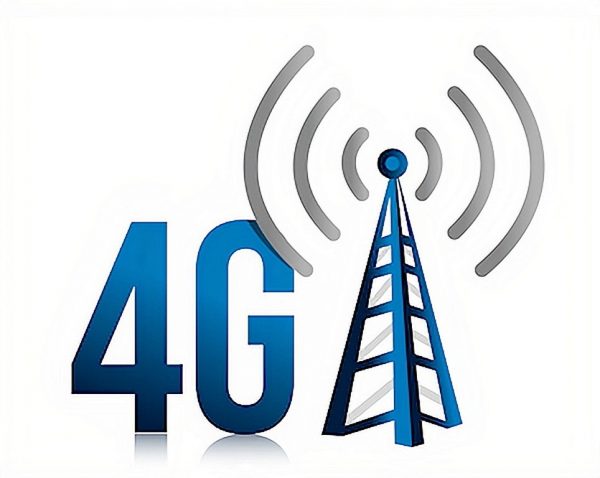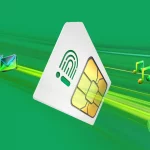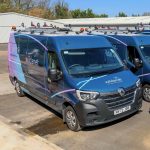Ofcom’s Plan to Measure the 4G UK Mobile Coverage Obligation

The telecoms regulator, Ofcom, has today revealed some more details about the new £1bn Shared Rural Network (SRN), which aims to extend UK geographic 4G mobile coverage to 95% by the end of 2025, and explained how they will assess the compliance of O2, Vodafone, Three UK and EE (BT) with those commitments.
Under the terms of the SRN agreement, each individual mobile operator has committed to providing “good quality data and voice coverage” to 88% of the United Kingdom’s landmass by 30th June 2024, and 90% by 30th June 2026, subject to certain conditions (including the provision of funding for elements of the programme). The collective effect of this is expected to deliver such coverage to 95%.
Today Ofcom has fleshed out how they will assess compliance with the new legally binding coverage commitments (see here), which also includes something that the official press release earlier this month did not – a clear run-down of how much coverage each individual mobile operator will be expected to deliver in each region (we previously only got a general overview of this).
Advertisement
Take note that we’ve renamed the operators below to use their more familiar consumer brand names (easier to read), rather than the corporate or group ones.
The SNR 2020 Coverage Obligations – by Each Operator
88% coverage
By the Initial Coverage Deadline the Licensee shall provide, and thereafter maintain, the Required Service to an area covering at least:
a) 88% of the geographic landmass of the United Kingdom;
b) [MNO specific value, which is 93% for EE, 91% for Three UK, 92% for O2 and Vodafone] of the geographic landmass of England;
c) [MNO specific value, which is 89% for EE, 91% for Three UK and O2, 93% for Vodafone] of the geographic landmass of Northern Ireland;
d) [MNO specific value, which is 75% for EE and O2, 72% for Three UK, 76% for Vodafone] of the geographic landmass of Scotland; and
e) [MNO specific value, which is 83% for EE and Three UK, 82% for O2 and Vodafone] of the geographic landmass of Wales.
90% coverage
By the Subsequent Coverage Deadline the Licensee shall provide, and thereafter maintain, the Required Service to an area covering at least:
a) 90% of the geographic landmass of the United Kingdom;
b) [MNO specific value, which is 94% for EE, 91% for Three UK, 93% for O2, 92% for Vodafone] of the geographic landmass of England;
c) [MNO specific value, which is 89% for EE, 91% for Three UK, 92% for O2, 93% for Vodafone] of the geographic landmass of Northern Ireland;
d) [MNO specific value, which is 85% for EE, O2 and Vodafone, 82% for Three UK] of the geographic landmass of Scotland;
e) [MNO specific value, which is 88% for EE, 85% for Three UK and Vodafone, 86% for O2] of the geographic landmass of Wales;
f) [MNO specific value, which is 40,000 for EE, 140,000 for Three UK, 90,000 for Vodafone and O2] premises in the United Kingdom which do not fall within the Licensee’s 2019 Baseline Coverage Level. Premises which are built after September 2019 will not count towards satisfaction of this requirement; and
g) [MNO specific value, which is 4,000 for EE and Three UK, 10,000 for O2 and 8,500 for Vodafone] kilometres of Roads in the United Kingdom which do not fall within the Licensee’s 2019 Baseline Coverage Level. Roads which are built after September 2019 will not count towards satisfaction of this requirement.
Interestingly, and despite all the 4G talk alongside the SRN announcement, the 2020 Coverage Obligations do not impose the use of any specific technology. “Therefore, the obligation holders may use any of their portfolio of licensed mobile spectrum to deliver the Required Service in meeting the 2020 Coverage Obligations,” said Ofcom. In practice though this will mostly reflect the use of 4G and 5G services (Ofcom clearly focuses on 4G).
In addition, Ofcom has also varied the spectrum licences held by the four mobile network operators in the 900MHz and 1800MHz bands in order to give effect to the new coverage commitments. On top of that the regulator said they intend to use a mix of information provided by the operators themselves and their own independent “on-the-ground” checking (drive testing in a sample of locations across different Nations) to see if the required coverage is being delivered.
For example, for the first 88% coverage goal, the regulator will apply an LTE average Reference Signals Received Power (RSRP) threshold of -105 dBm [decibel milliwatts] (i.e. RSRP at or above this threshold with a 50% or higher confidence level); this is a measure of mobile signal quality where, in simple terms, the closer to 0dBm the better (negative dBm values are perfectly normal here but past a certain point you won’t see much real-world benefit).
Advertisement
Obviously this is only testing signal, although reception quality is only part of what can make or break a mobile service. In the real-world an operator can still deliver slow speeds, even on a good signal, such as in areas where only a single band of spectrum can be used at once (i.e. no Carrier Aggregation enabled) or where the mast / base station simply isn’t being supplied with enough data capacity (backhaul) to feed all of its end-users at the best speed (congestion).
At this point it’s worth reminding readers that Ofcom defines 4G coverage, based firstly, on the minimum signal strength required to deliver a 95% probability of making a 90-second telephone call successfully completed and, secondly, on a 95% chance of getting a download speed of at least 2Mbps.
Mark is a professional technology writer, IT consultant and computer engineer from Dorset (England), he also founded ISPreview in 1999 and enjoys analysing the latest telecoms and broadband developments. Find me on X (Twitter), Mastodon, Facebook, BlueSky, Threads.net and Linkedin.
« WightFibre FTTH Broadband Rollout Reaches 15,000 Homes
Virgin Media Confirm 1Gbps Broadband Live in West Midlands »






















































So somewhere between fair and good, but only by 2025, and I guess outdoors
RSRP (dBm) Signal strength
−80 dBm Excellent
−90 dBm Very good
−100 dBm Good
−110 dBm Fair
−120 dBm Poor
−130 dBm None
“the regulator will apply an LTE average Reference Signals Received Power (RSRP) threshold of -105 dBm ”
Not good enough. It needs to be -85dBm average. The reason for this is anything connection over -90dBm probably won’t attain more than 40mbs. Which brings me to the second point “good quality data and voice coverage”. What does “good quality” mean exactly? Coming out with a statement like that is OFCOM doing what BT’s done on its new tv advert for “superfast” which fails to mention what “superfast” actually is.
Yet again OFCOM proves this type of thing is utterly beyond them. You shouldn’t be aiming for “good enough” you should be aiming for “the best”. Seems to me that the Telco’s are more than adept at wrapping the regulator around their collective little fingers.
Hopefully all operators and MVNOs will support voice over 4G calling etc rather than being to stop down to 3G or 2G as I currently have to.
I often have to step down to 3g/2g to get a data connection.